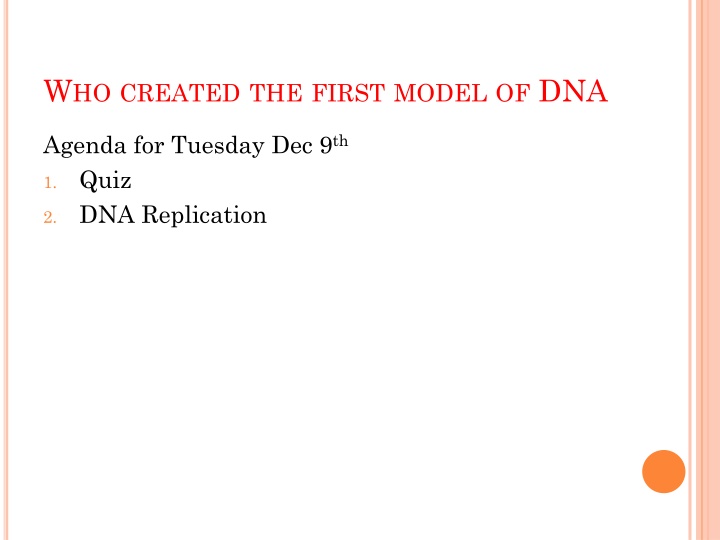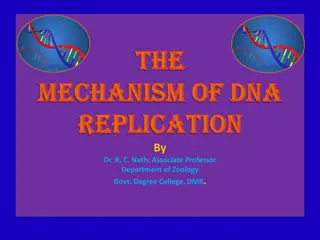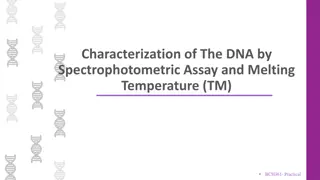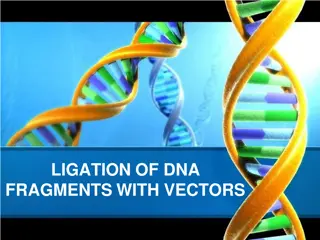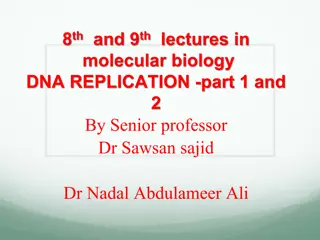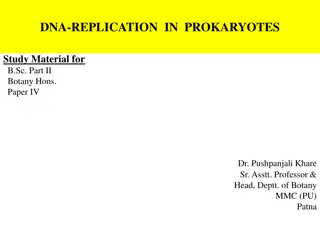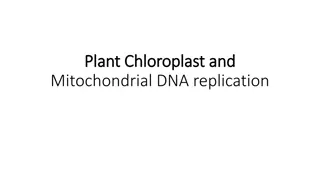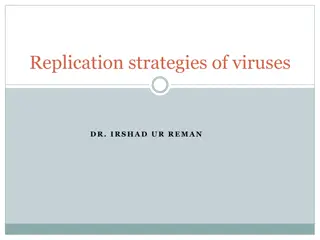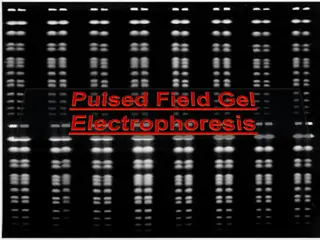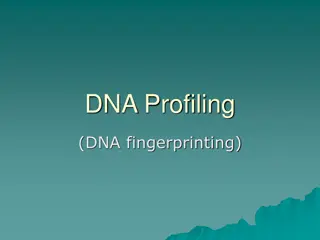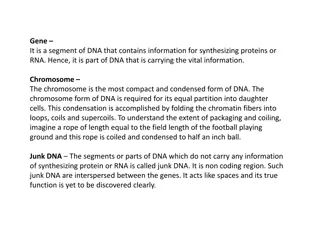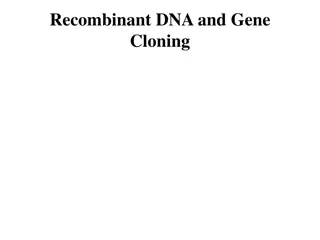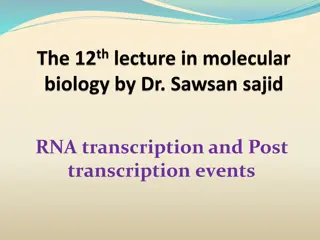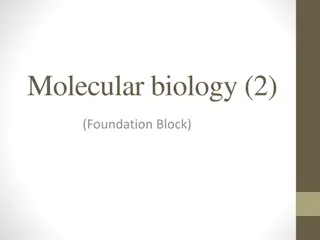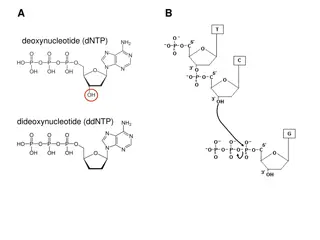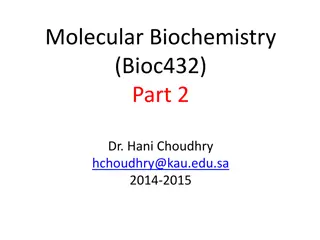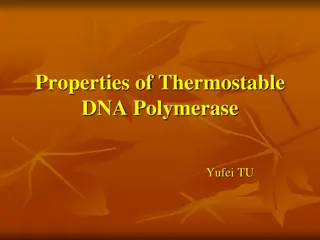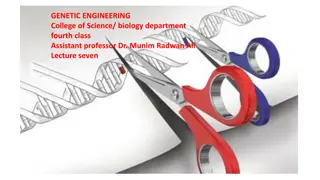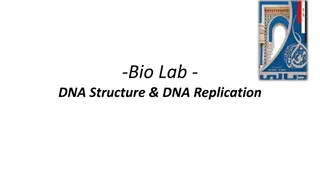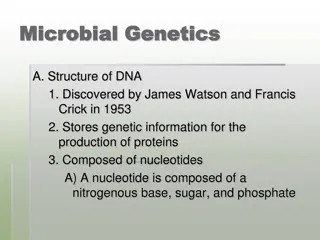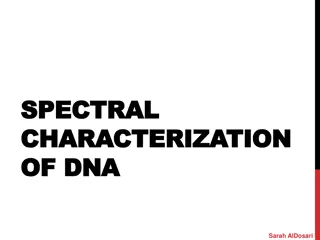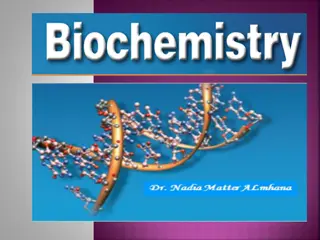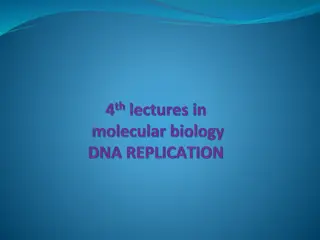DNA Replication Process Overview
Discover the fascinating process of DNA replication through detailed images and explanations. Explore concepts like the central dogma, semiconservative replication, unwinding, base pairing, leading and lagging strands, and more. Understand how DNA helicase, polymerase, ligase, and primase work together to create new DNA strands. Dive into the replication forks, template strands, complementary sequences, and the final joining steps.
Download Presentation

Please find below an Image/Link to download the presentation.
The content on the website is provided AS IS for your information and personal use only. It may not be sold, licensed, or shared on other websites without obtaining consent from the author.If you encounter any issues during the download, it is possible that the publisher has removed the file from their server.
You are allowed to download the files provided on this website for personal or commercial use, subject to the condition that they are used lawfully. All files are the property of their respective owners.
The content on the website is provided AS IS for your information and personal use only. It may not be sold, licensed, or shared on other websites without obtaining consent from the author.
E N D
Presentation Transcript
WHO CREATED THE FIRST MODEL OF DNA Agenda for Tuesday Dec 9th Quiz DNA Replication 1. 2.
SEMICONSERVATIV E REPLICATION
REPLICATION DNA Helicase unzips DNA RNA Primers bind to DNA strands DNA Polymerase adds nucleotides to DNA Leading continuous adding of bases Lagging Okazaki fragments DNA Ligase fills in gaps
DNA REPLICATION Two strands open forming Replication Forks (Y-shaped region) New strands grow at the forks 3 Parental DNA Molecule 5 Replication Fork 3 5 5
UNWINDING DNA Helicase unwinds/unzips DNA strand Hydrogen bonds are broken 1. A. RNA Primase adds a starter segment to each strand 2.
BASE PAIRING Steps DNA Polymerase adds nucleotides to DNA strands DNA polymerase can only add nucleotides to the 3 end of the DNA This causes the NEW strand to be built in a 5 to 3 direction Adds a 5 Q: Will the strands be identical? 1. A.
LEADING STRAND Replicated as the DNA unwinds New nucleotides are added continuously
LAGGING STRAND Replicated away from replication fork Create segments - Okazaki Fragment Fragments are later connected
5 3 Which Template will be the leading strand? Lagging strand? 5 3 What would be the complementary DNA strand for the following DNA sequence? DNA 5 -CGTATG-3
JOINING DNA polymerase removes RNA primer and fills with DNA nucleotide DNA Ligase links two sections of DNA together
REPLICATION DNA Helicase unzips DNA RNA Primers bind to DNA strands DNA Polymerase adds nucleotides to DNA Leading continuous adding of bases Lagging Okazaki fragments DNA Ligase fills in gaps
PROKARYOTEVS. EUKARYOTE Prokaryotes 1 origin Eukaryote Many origins
QUESTIONS: PUTONASEPARATESHEETOFPAPER. 1. Replicate this strand of DNA: ATGCAGTCGATG TACGTCAGCTAC 2. If a DNA strand were to replicate, would they be the same or different? Why? 3. How does the structure of a DNA molecule help account for the great variety of life that exists on earth?
WHATDOTHEFOLLOWINGENZYMESDO: HELICASE, POLYMERASE, LIGASE. Agenda for Wednesday December 10th Finish replication (go over questions) Transcription Translation 1. 2. 3.
